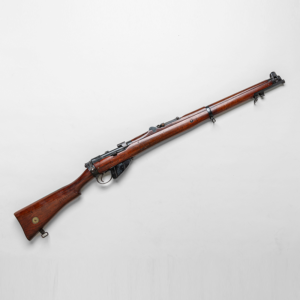A Relic of Courage and Sacrifice
The Lee Enfield Mk III, a .303 caliber bolt-action rifle, stands as an iconic symbol of military history, particularly renowned for its service during World War I. Its legacy is deeply intertwined with the Gallipoli Campaign, a pivotal conflict that shaped the course of the war.
The Mk III, introduced in 1907, was a refinement of earlier Lee Enfield models, boasting improved accuracy, reliability, and a higher rate of fire. Its distinctive 10-round magazine and smooth bolt action made it a favored weapon among soldiers on the front lines. During the Gallipoli Campaign, which took place on the Gallipoli peninsula in modern-day Turkey, the Mk III was the standard-issue rifle for British and Commonwealth forces.
Courage and Resistance
The rugged terrain and harsh conditions of Gallipoli tested the Mk III’s durability and performance. Despite the challenges, the rifle proved to be a reliable and effective weapon, enabling soldiers to engage in trench warfare and deliver accurate fire at long distances. The Mk III’s reputation was further solidified by its role in the infamous ANZAC (Australian and New Zealand Army Corps) landings, where it became a symbol of courage and resilience.
The 1912 Lee Enfield Mk III “Gallipoli” holds a unique historical significance. As a firearm manufactured in 1912, it’s plausible that this particular rifle may have seen action during the Gallipoli Campaign, making it a tangible link to a defining moment in history. Its presence in Australia, a nation deeply connected to the ANZAC legacy, adds another layer of meaning to this artifact.
For collectors and enthusiasts, this firearm represents a tangible connection to a pivotal era, a reminder of the valor and resilience displayed by those who served. Moreover, it serves as a testament to the enduring legacy of the Lee Enfield Mk III, a rifle that has earned its place in the annals of military history.













